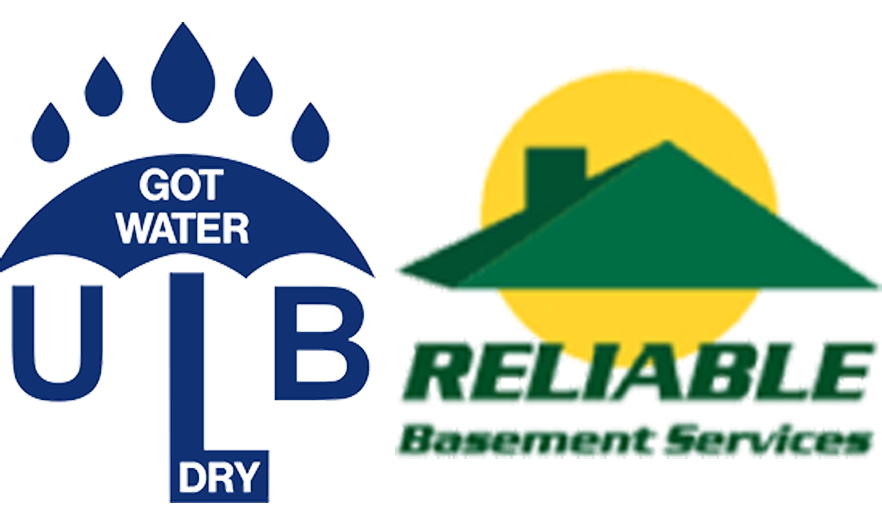When most people think of basement flooding they think of heavy summer rains. However with today’s ever changing weather cycles, it is increasingly likely that sooner or later there will be rain showers in the middle of winter. Did you know that snow and ice combined with an unseasonal rain may induce basement water seepage that might not occur under normal condition?
Swirling winter winds create random snows drifts many of which end up next to the structure. As harmless as this might appear ice and snow prevent rainwater from flowing away from the property keeping it trapped against the building. Because most of the basements in today homes are insulated and heated a warm zone is created along the perimeter of foundation. The end result is basement water seepage thru normally inactive foundation cracks or unexplained areas of water over the top of the foundation.( a condition known as an overspill) Also as the water freezes at the base of the downspout it begins to work its way back up to the roof line with the end result being a split in the vertical line.
A simple way to help prevent foundation water seepage thru cracks is to treat the area around your house like you would your walk or drive. Clear a path approx. 2 feet wide around the perimeter of the foundation paying extra attention to the areas where there are downspouts. If at all possible clear an addition run extending further out into the yard in these locations. This is a simple way to prevent foundation water seepage.
Most all city ordinances require storm sump pumps to discharge to splash (dumping onto the soil 6-10 ft away from the home). In some cases the discharge line is buried underground and will either terminate into a bubbler pot. As the snow accumulates over these lines the discharged water cannot escape and freezes. One of two problems will occur as a result of this. First, water flowing out of the sump pump which would ordinarily flow safely away from the home is now inadvertently re-directed next to the house causing the sump pump to work harder that it should. This may result in seepage occurring between the foundation wall and the floor line.(commonly referred to as hydro-static pressure)
However the most potentially negative result of a frozen discharge is a failed/burned out sump pump. More often than not this problem is not discovered until water has gotten into the basement.
If you have just a simple PVC line running out the wall make sure there is enough pitch to carry the water away from the house. Secondly make sure that the end of the run is clear and free of snow and other potential blockage. You may also try wrapping a low voltage heater cable around the line. Make sure you get one intended for outdoor use. Because you will be using this around a plastic line(although be it a heavy duty plastic line) it will require taking added precautions it prevent un-intended damage. Thus we suggest this be used as a last result.
Unfortunately, in order to carry the water far enough away from their house some people run a length of black corrugated piping above grade. This type of line will have a series of peaks and valleys so it is crucially important to remove the line at the very least just after the first heavy-freeze. In the case of a sub soil discharge always make sure the termination point is clear of debris and other obstacles that may prevent proper outflow.
A properly installed subsoil discharge line will have what they refer to as a freeze gap near the house. This is an open area between the location where the smaller PVC line ties into the larger subsoil line. The freeze gap is intended to act as a relief point allowing water to flow out above grade should the below grade portion of line become in-operative. A freeze point is meant to prevent burning out the sump pump. If you have a sub soil discharge line and do not see a freeze gap one can be installed by a qualified water proofer.
While you cannot control mother nature, with a couple easy steps you can prevent unnecessary water seepage and the damaging effects of a failed sump pump.
Written by Walter Slowinski





